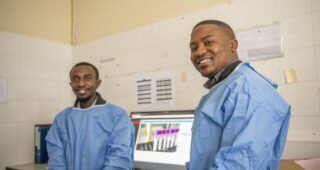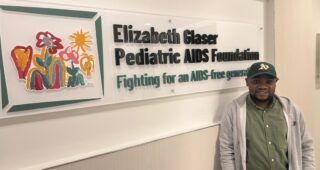In Lesotho, 3G Printers Improve Early Infant Diagnosis and Treatment

In Lesotho, the Elizabeth Glaser Pediatric AIDS Foundation (EGPAF) is developing innovative ways to use new technologies, such as 3G printers, to improve HIV/AIDS diagnosis and treatment for infants. For the past four years under the U.S. Agency for International Development (USAID)-funded Strengthening Clinical Services (SCS) Project, EGPAF has partnered with the Lesotho Ministry of Health (MOH) to shorten turn-around time for early infant diagnosis (EID) of HIV and ensure that HIV-positive infants are put on treatment as quickly as possible. EGPAF-Lesotho has been implementing a system in which notifications of positive test results are sent via a 3G telecommunication network to the EGPAF office and onward to EGPAF’s district-based staff for fast-tracking HIV-positive infants onto treatment. Thanks to a generous donation of 25 printers from Hewlett Packard, EGPAF will launch a new initiative using 3G printing technology to try to reduce current test result turn-around times by 50 percent as part of the SCS Project.
There are approximately 41,000 HIV-positive children living in Lesotho, and nearly 40 percent of them don’t have access to the care and treatment they need to stay healthy. One reason for this treatment gap is limited access to EID and treatment services for HIV-positive infants. Lesotho’s national HIV/AIDS elimination guidelines require that all HIV-exposed infants be tested for the virus at six weeks of age and put on antiretroviral therapy (ART) immediately after a positive diagnosis. Without ART, one third of HIV-positive children will not see their first birthday, and almost one half will die before the age of two.
Long lag times between testing and the results make it difficult to ensure HIV-positive infants and their parents receive their test results and return to the clinic for treatment. Under Lesotho’s national system without any EGPAF intervention, results are physically transported from the central lab in the capital city of Maseru to health facilities across the country. This can cause turn-around times as long as 100 days from the initial HIV test. During the winter months, remote health facilities in mountainous regions can be completely cut off from physical transport and supply systems. These delays make it difficult to ensure a mother and infant will return to the health facility to learn their results and initiate ART for HIV-positive infants.
But the good news is that 3G printers can significantly reduce turn-around times by allowing for immediate electronic transmission of the test results to local health facilities. The printers at the clinics will receive an email with HIV test results and then immediately print those results using the same machine. This eliminates the need for results to pass through the EGPAF/Lesotho central office and delivers test results HIV-positive infants and their families much faster.
Additionally, EGPAF is working with local clinics to develop a system where health workers phone parents or caregivers when the results arrive via the 3G printer to alert them that it is time to return to the health facilities, collect the results, and receive a consultation. This process decreases time spent seeking out clients in person and asking them to return to the facility. It also reduces time spent waiting for clients to return on specific appointment days. Instead, health workers can focus on tracking parents/caregivers who fail to return after having been phoned by facility staff or tracking those who may have provided incorrect or false contact information.
Thanks to Hewlett Packard and the USAID, EGPAF will continue to develop innovative approaches to improve EID services and expand access to ART for HIV-positive children in Lesotho.
Learn more about our work to eliminate pediatric HIV in Lesotho.
Ashley Thompson is a Country Officer for EGPAF-Lesotho.
Ashley Thompson
General



